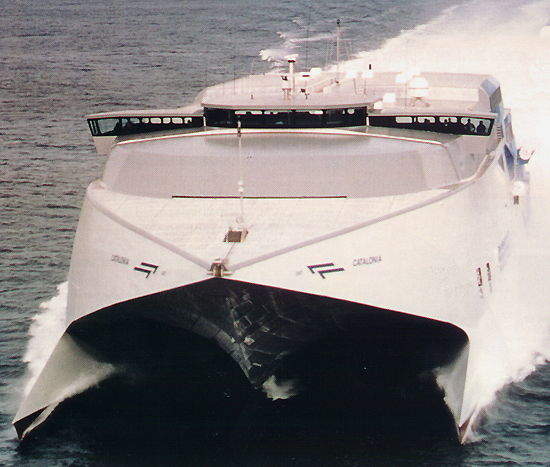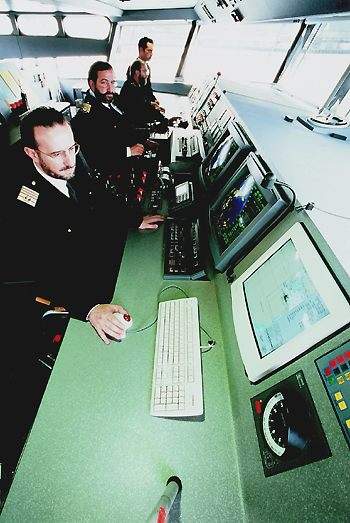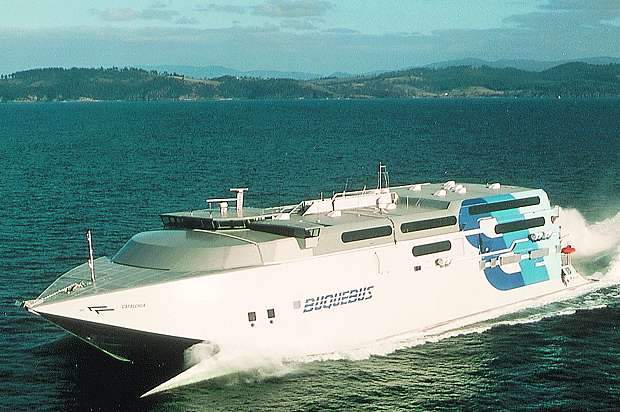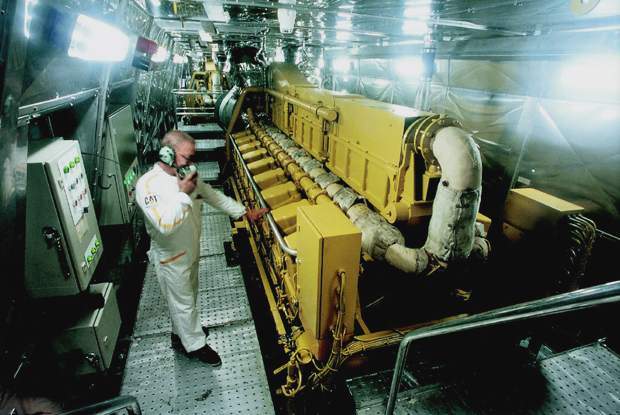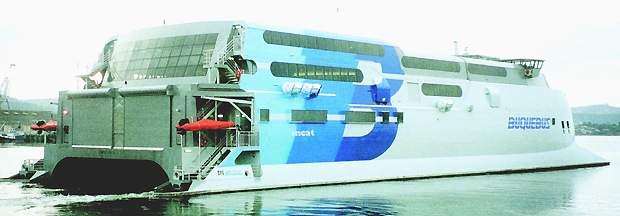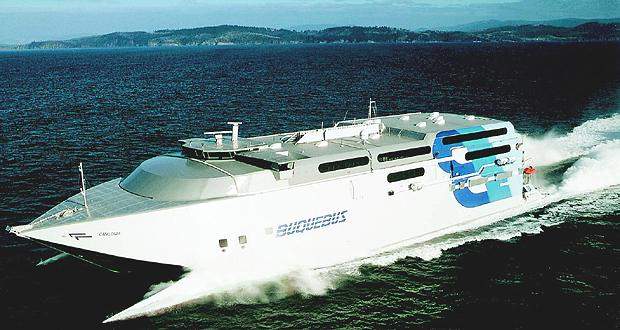The Catalonia is one of a number of wave-piercing catamaran ferries built by Incat at their yard in Hobart, Tasmania. In June 1998, the Catalonia broke the transatlantic record to gain the Blue Riband, travelling 1015 nautical miles in 24 hours at an average speed of 38.87 knots. This record was subsequently taken by Cat-Link V, another of Incat’s catamarans. Catalonia is operated by Buquebus in Spanish waters between Barcelona and Mallorca.
DESIGN
The Catalonia is fabricated from marine grade aluminium alloys. It has an overall length of 91.3m and a waterline length of 81.33m. It has an overall beam of 26m and a hull beam of 4.33m, excluding fenders. It has a deadweight of 500t.
The Catalonia hull is designed to ensure that the vessel can accelerate quickly, minimising wave creation. At the bow, the waterborne hulls are 10% immersed and contain 10% reserve buoyancy. The remaining 80% reserve buoyancy is held in the forward central hull. This results in a very versatile hull form, which is sympathetic to a safe ride in all weather conditions and sea angles.
The waterline length has been increased by more than 22m (37%) over Incat’s 74m car ferries, ensuring a much more comfortable ride for passengers. Part of the improvement can also be attributed to the ride control system.
FACILITIES
The Catalonia carries 877 passengers and 225 cars, or a combination of cars and up to four coaches. Passengers enter the interior aft via the vehicle deck stairs or terminal gangway. A port passage provides access for disabled passengers. A central atrium-style lounge located midships on tier 2 provides the focal point for all passenger services. The ship’s office, located starboard forward, serves as an information centre and money exchange. The port side houses an arcade-games area.
An open staircase, located in the central atrium, extends to tier 3, where passengers are greeted by panoramic views of the horizon and the wave piercer bar.
Passengers on tier 3 have the choice of banquette or aircraft-style seating, arranged with facing tables, and quiet rooms/business lounges. The forward observation deck allows passengers to view the operations of the bridge or to just enjoy the ocean view.
PROPULSION
The Catalonia is the first vessel in the world to be fitted with the new Caterpillar 3618 engines built at the Caterpillar Large Engine Centre in Spain. Each engine weighs 36.4t and develops 7,200kW. Each engine drives a transom mounted waterjet (Lips LJ145D) through a Renk ASL60 reduction gearbox. The custom-designed Lipstronic jet control system provides, apart from steering and reversing, the option of thrust vectoring and autopilot.
Two 230kW Caterpillar generators in each hull feed associated independent main switchboards, capable of disconnection in an emergency.
AUTOMATION AND CONTROL
The ship’s position is provided by a Decca MX400B, a six-channel GPS with built-in DGPS Beacon receiver. Primary navigation is performed by the two Decca BridgeMaster II 250 Series radars. The Navigator’s radar uses a 30kW S-Band transceiver transmitting at 3GHz with a 12ft scanner. The Captain’s radar is an X-Band 25kW unit, transmitting at 9.4GHz into a 6ft scanner. A Skipper GDS101 with a 50kHz transceiver provides optimum sea bottom detection. Long-range communications in the 2MHz to 30MHz band is catered for by a Skanti TRP7200 Transceiver. Two Skanti VHF3000 25W transceivers operating in the frequency range 155MHz to 163MHz provide short-range communications.

